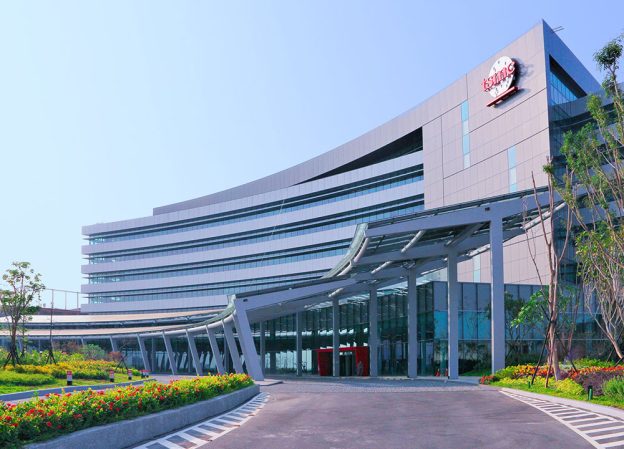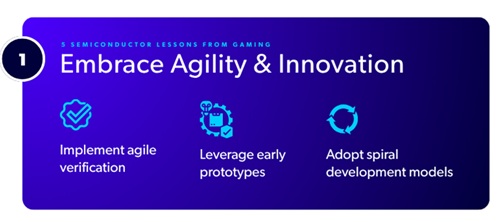The last few years have seen multiple disruptions in the supply chain in many industries. One of the key technologies that many fingers have pointed to is the semiconductor technology. As products in all industries become more electronics based, semiconductors play a key role since no end system could function today without … Read More
 Think Quantum Computing is Hype? Mastercard Begs to DisagreeJust got an opportunity to write a blog…Read More
Think Quantum Computing is Hype? Mastercard Begs to DisagreeJust got an opportunity to write a blog…Read More TSMC Kumamoto: Pioneering Japan's Semiconductor RevivalIn the lush landscapes of Kumamoto Prefecture, on…Read More
TSMC Kumamoto: Pioneering Japan's Semiconductor RevivalIn the lush landscapes of Kumamoto Prefecture, on…Read More Memory Matters: The State of Embedded NVM (eNVM) 2025Make a difference and take this short survey.…Read More
Memory Matters: The State of Embedded NVM (eNVM) 2025Make a difference and take this short survey.…Read More 5 Lessons the Semiconductor Industry Can Learn from GamingBy Kamal Khan The semiconductor world has always…Read More
5 Lessons the Semiconductor Industry Can Learn from GamingBy Kamal Khan The semiconductor world has always…Read MoreCoherency in Heterogeneous Designs
Ever wonder why coherent networks are needed beyond server design? The value of cache coherence in a multi-core or many-core server is now well understood. Software developers want to write multi-threaded programs for such systems and expect well-defined behavior when accessing common memory locations. They reasonably expect… Read More
Podcast EP104: Enabling Future Innovation with GBT Technologies
Dan is joined by Dr. Danny Rittman, CTO of GBT Technologies. Danny has an extensive background in the R&D space and has been working for companies such as Intel, IBM, and Qualcomm. He has spent most of his career researching and inventing processor chips, as well as paving the way for futuristic AI software programs that can be… Read More
Five Key Workflows For 3D IC Packaging Success
An earlier blog started with the topic of delivering 3D IC innovations faster. The blog covered the following foundational enablers for successful heterogeneous 3D IC implementation.
- System Co-Optimization (STCO) approach
- Transition from design-based to systems-based optimization
- Expanding the supply chain and tool
WEBINAR: Intel Achieving the Best Verifiable QoR using Formal Equivalence Verification for PPA-Centric Designs
Synopsys Fusion Compiler offers advanced optimizations to achieve the best PPA (power, performance, area) on today’s high-performance cores and interconnect designs. However, advanced transformation techniques available in synthesis such as retiming, multi-bit registers, advanced datapath optimizations, etc. are
A faster prototyping device-under-test connection
When discussing FPGA-based prototyping, we often focus on how to pour IP from a formative SoC design into one or more FPGAs so it can be explored and verified before heading off to a foundry where design mistakes get expensive. There’s also the software development use case, jumpstarting coding for the SoC before silicon … Read More
IC Layout Symmetry Challenges
Many types of designs, including analog designs, MEMs, and image sensors, require electrically matched configurations. This symmetry has a huge impact on the robustness of the design across process variations, and its performance. Having an electrically matched layout basically means having a symmetric layout. To check … Read More
Verifying 10+ Billion-Gate Designs Requires Distinct, Scalable Hardware Emulation Architecture
In a two-part series, Lauro Rizzatti examines why three kinds of hardware-assisted verification engines are a must have for today’s semiconductor designs. To do so, he interviewed Siemens EDA’s Vijay Chobisa and Juergen Jaeger to learn more about the Veloce hardware-assisted verification systems.
What follows is part one,… Read More
GM: Where an Option is Not an Option
How does a General Motors executive react when they get a transfer to work at OnStar? “What am I going to tell my partner?”
Twenty-six years after its founding, OnStar remains an appendage to GM – a team set apart from the heart and soul of the larger company. Team members assert that the group is profitable, thanks to millions of GM… Read More
C-V2X: Talking Cars: Toil & Trouble
Last year, the U.S. Federal Communications Commission sought to resolve the lingering dispute over the use of 75MHs of Wi-Fi spectrum in the 5.9MHz range, previously allocated to the automotive industry for safety applications, by designating 45MHz of that spectrum for unlicensed use while preserving 30MHz for automotive … Read More











EDA Has a Value Capture Problem — An Outsider’s View